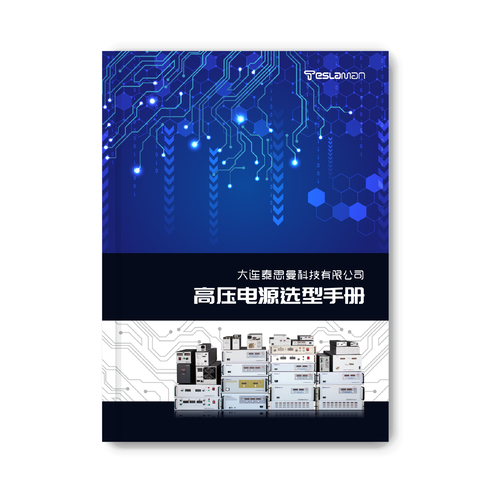The Key Role and Far-Reaching Influence of High-Voltage Power Supplies in Semiconductor Testing
Abstract: This article explores in depth the application of high-voltage power supplies in semiconductor testing from a professional perspective. It elaborates in detail on their important influence on the accuracy, reliability of testing and the development of the semiconductor industry, aiming to provide comprehensive and in-depth knowledge references for professionals in the field of semiconductor testing and to promote a profound understanding and further research on the application value of high-voltage power supplies.
I. Introduction
With the rapid development of semiconductor technology nowadays, the performance and quality requirements for semiconductor devices are becoming increasingly stringent. Semiconductor testing, as a crucial link to ensure that devices meet standards and application requirements, is of vital importance in terms of its accuracy and reliability. High-voltage power supplies play an indispensable role in semiconductor testing, and their characteristics and performance directly affect all aspects of testing, from the measurement of basic electrical parameters to the verification of complex device functions.
II. The Influence of High-Voltage Power Supplies on the Accuracy of Semiconductor Testing
(I) Precise Voltage Supply Ensures the Precision of Parameter Measurement
The electrical parameters of semiconductor devices, such as breakdown voltage and insulation resistance, usually need to be measured under high-voltage conditions. High-voltage power supplies can provide stable and precise high-voltage outputs, ensuring that the voltage applied to semiconductor devices during the testing process meets the requirements of the testing specifications. For example, when measuring the breakdown voltage of power semiconductor devices, even a tiny voltage deviation may lead to a significant error in the measurement results, thus misjudging the performance of the device. A stable high-voltage power supply can control voltage fluctuations within a very small range, making the measurement data more accurate and reliable and providing a solid data basis for the quality assessment of semiconductor devices.
(II) Reducing Noise Interference to Improve Testing Resolution
The noise characteristics of high-voltage power supplies have an important impact on the resolution of semiconductor testing. When testing weak signals or semiconductor devices that are sensitive to noise, such as high-precision sensor chips or high-speed communication chips, the noise output by the high-voltage power supply may mask the real signals of the tested devices, resulting in deviations in the test results or the inability to accurately detect small signal changes. High-quality high-voltage power supplies can effectively reduce output noise through the adoption of advanced filtering techniques and circuit designs, improve the signal-to-noise ratio of the testing system, and thus enhance the testing resolution, which helps to discover the performance characteristics and potential defects of semiconductor devices at the micro level.
III. The Influence of High-Voltage Power Supplies on the Reliability of Semiconductor Testing
(I) Stable Output Ensures the Repeatability of Testing
Semiconductor testing usually requires a large number of repeated tests to ensure the consistency and reliability of the results. The stability of high-voltage power supplies is directly related to the repeatability of testing. If there are large fluctuations or drifts in the output of the high-voltage power supply during multiple testing processes, even for the same semiconductor device, the test results may vary significantly, which will seriously affect the accurate judgment of the device's performance. A stable high-voltage power supply can maintain a constant high-voltage output during a long testing process, making the testing conditions as consistent as possible each time and ensuring that the test results have a high degree of repeatability, thus enhancing the credibility of the semiconductor testing data.
(II) Overload Protection Ensures the Safety of the Testing System
During the semiconductor testing process, due to various reasons, abnormal conditions of the tested devices or failures of the testing system may occur, resulting in an instantaneous current overload situation. The overload protection function equipped with high-voltage power supplies can quickly cut off the output in such cases, preventing excessive current from causing permanent damage to other equipment in the testing system and the tested semiconductor devices. This not only protects expensive testing equipment and semiconductor devices but also avoids test interruptions and data loss caused by equipment damage, ensuring the reliability and continuity of the entire testing process.
IV. High-Voltage Power Supplies Promote the Development of Semiconductor Testing Technology
(I) Meeting the Testing Requirements of New Semiconductor Devices
With the continuous innovation of semiconductor technology, new semiconductor devices such as wide-bandgap semiconductors and three-dimensional integrated chips are emerging continuously. These new devices often have higher working voltages, more complex structures and more special electrical characteristics, posing new challenges to high-voltage power supplies. The technology of high-voltage power supplies is also constantly evolving. Through innovations in expanding the output voltage range, improving the rising and falling edge rates of voltage, and enhancing the adaptability to complex loads, it can meet the testing requirements of new semiconductor devices and provide powerful testing technology support for the technological upgrading and product innovation of the semiconductor industry.
(II) Integration with Automated Testing Systems to Improve Testing Efficiency
In modern semiconductor manufacturing, automated testing systems are widely used. High-voltage power supplies, as an important part of automated testing systems, need to achieve seamless integration and collaborative work with other testing equipment such as signal generators, oscilloscopes, and data acquisition cards. Through standardized communication interfaces and control protocols, high-voltage power supplies can be conveniently incorporated into the automated testing process to achieve precise control of the testing process and real-time data collection and processing. This integration greatly improves the efficiency of semiconductor testing, reduces human operation errors, and adapts to the needs of large-scale and high-efficiency semiconductor production testing.
V. Conclusion
High-voltage power supplies have an irreplaceable important position in semiconductor testing. Their influence on the accuracy and reliability of testing runs through the whole process of semiconductor device testing, from basic parameter measurement to complex function verification, from single-device testing to large-scale automated production testing. With the continuous development of semiconductor technology, the technology of high-voltage power supplies also needs to be continuously innovated and improved to better meet the testing requirements of new semiconductor devices, further improve the quality and efficiency of semiconductor testing, and promote the entire semiconductor industry to continuously move forward in the direction of higher performance, higher quality and more advanced technology. In the future field of semiconductor testing, high-voltage power supplies will continue to play a key role and become an important guarantee for semiconductor technology innovation and industrial development.




















